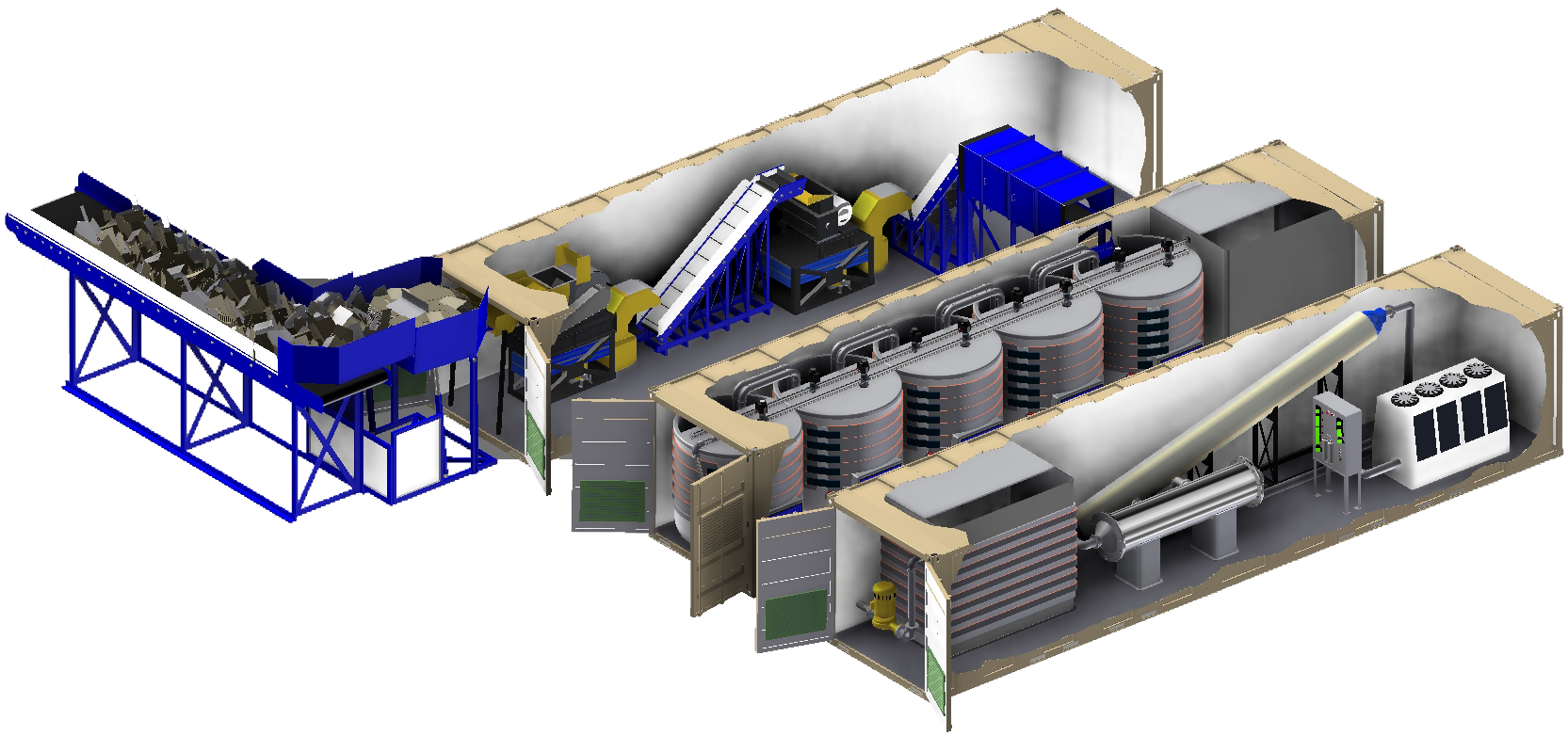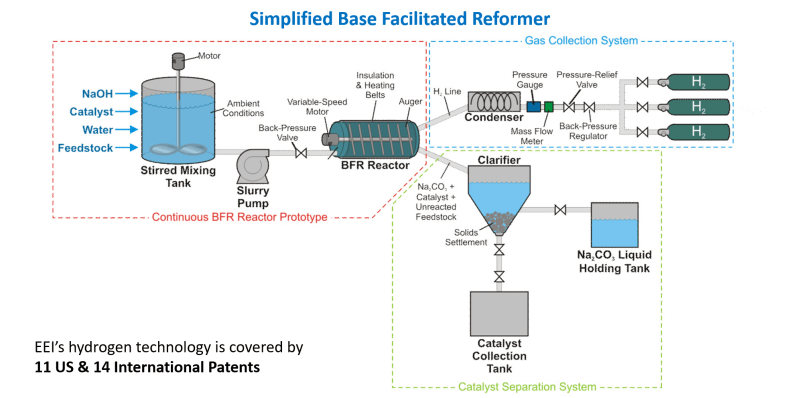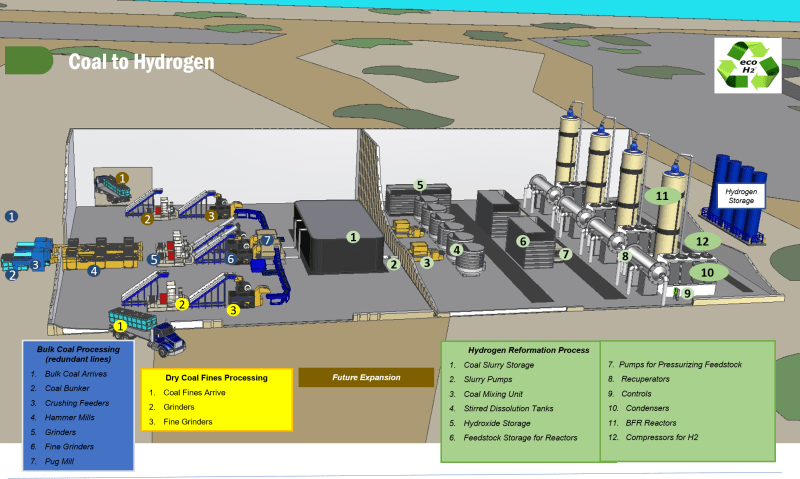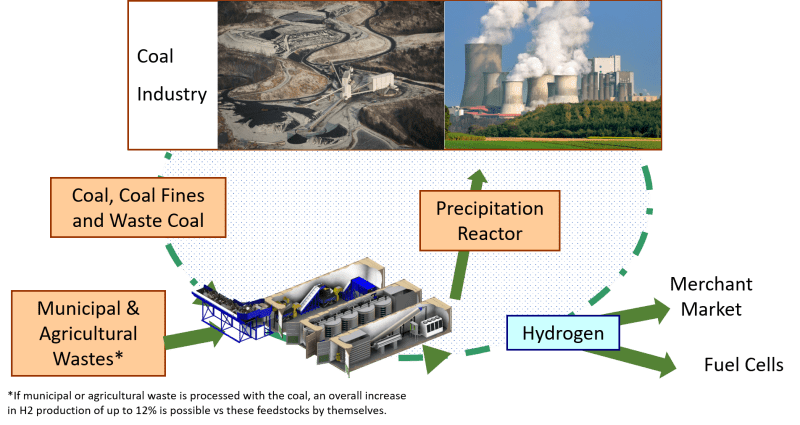Creating a Better Tomorrow by Repurposing Coal

Converting Coal & Waste into Renewable Hydrogen
Global climate change is one of the world’s biggest challenges. Rising atmospheric temperatures and increasing ocean levels are largely attributed to greenhouse gas emissions.
Coal is the single largest contributor to anthropogenic climate change. The burning of coal emits 46% of carbon dioxide emissions globally, which is 72% of the electric industry’s greenhouse gas emissions.
Furthermore, pollution from waste coal is another worldwide challenge. Hundreds of millions of tons of waste coal litter the mining landscape. These piles of waste leach iron, manganese, mercury, and aluminum into waterways, causing acid drainage, killing neighboring streams.
A secondary contributor to climate change is the decaying of organic matter in landfills, producing both methane and carbon dioxide. Global municipal solid waste(MSW) exceeds2 billion tons per year and is projected to continuously grow. Over half of that goes into landfills today producing 800 million metric tonnes of carbon dioxide equivalent.
Breakthrough Technology
Eco Energy International now offers a breakthrough technology to turn these problems into opportunities. Base Facilitated Reformation (BFR), is a revolutionary technology that can convert any carbon-based material directly into pure hydrogen.This proprietary process is scalable to meet the needs of various applications, large or small.The reformation equipment is modular, allowing it to be located near end users, reducing or eliminating expensive transportation costs, and their emissions.
Plus, our method produces revenue via the sale of clean renewable hydrogen and the byproduct: calcium carbonate (lime). Project payback is usually <3 years.
The BFR process works well on both coal and municipal waste individually, but if we combine both, it becomes an even better feedstock, increasing the overall output 12%.
The BFR process reduces greenhouse gases normally emitted from landfills and the burning of coal.

No Greenhouse Gas Emissions
Unlike traditional burning of coal which emits greenhouse gases, our BFR technology is a low cost direct conversion of biogenic feedstocks into pure hydrogen (H2) without emitting greenhouse gases. No CO or CO2 gases are formed –No Water Gas Shift or Pressure Swing Absorption
Because of this, all CO2 is sequestered in a solid form (i.e. sodium carbonate) which can be sold, converted into other products or stored.

Comparing BFR to other H2 Processes:
Base Facilitated Reformation
- Both biogenic and fossil fuel materials can be converted directly into hydrogen
- Minimizes organic waste going into the landfill
- Minimizes the need for costly incinerators and their emissions
- Generates revenue via the sale of cleaner, H2
- Costs are competitive with existing large scale facilities
- Modular and scalable
- No greenhouse gases and all carbon is sequestered
Steam Methane Reformation
- Non-renewable natural gas (methane) as its feedstock
- H2 is typically only 70% pure, requiring additional processing. This process creates CO2.
- Process is very energy intensive
- For every ton of hydrogen, 11 tons of CO2 are produced.
- Since it is impure, this CO2 is typically released to the atmosphere.
- Endothermic: requiring considerable heat
Cost Effective, Eco-Friendly Hydrogen Production
- The demand for merchant market hydrogen (H2) is expected to grow twenty-fold by the year 2030.
- States like California are now requiring that upwards of 33% of all H2 must be produced from renewable sources.
- Eco H2 bio reformation produces hydrogen from renewables and:
- – can produce hydrogen competitive to large scale reformers
- – is modular and scalable to meet almost any demand
- – can be located near end use reducing transportation costs
- – sequesters all carbon resulting in a negative carbon footprint
- – byproduct carbonate can be sold, landfilled or recycled
- – can be combined with solid, gaseous and liquid renewable feedstocks such as coal

The BFR process has been demonstrated on wide variety of fuels, making it viable in multiple applications. Examples of feedstocks successfully reformed into hydrogen by BFR process include Coal Industry Waste (CIW):
- Coal
- Waste Coal
- Coal Fines
- Etc.

Coal Slurry
A Coal slurry is a byproduct of washing coal as it is mined. In the U.S. alone, slurry ponds are estimated to contain more than 2 billion tons of coal fines.This is ideal for BFR conversion into hydrogen, because our technology is an aqueous process, so the coal slurry does not need to be dried.
Through our BFR process, metallic and trace elements from waste coal are contained in solid form, for appropriate disposal without harming the environment. This includes hydrogen sulfide and other pollutants.

In Summary:
- our base facilitated reformation process has been successfully demonstrated using a wide variety of renewable feedstocks. The BFR can convert over 90 percent of waste into usable energy thus reducing landfill reliance along with lowering long term methane and carbon dioxide emissions.
Economical establishment of production facilities with minimal transportation costs is feasible allowing for the creation of global hydrogen infrastructure.
This technology has the potential to reduce greenhouse gases over 21 billion metric tons of carbon dioxide equivalent per year worldwide.
Eco Energy International reformation can be the bridge to the hydrogen economy. Providing needed cost and distribution advantages to present and future hydrogen users, by establishing a low-cost hydrogen production and distribution infrastructure, all while reducing the environmental impact of municipal, agricultural and other waste streams.
